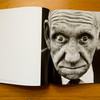Review: The Eyes of War by Martin Roemers

World War 2 might be the last war any Western nation fought that came with a simple, obvious moral certitude. Fighting against Nazi Germany and Japan, both aggressors, amounted to fighting for the ideals that at the end of the war made it into universally agreed principles. You can’t easily say that about the various wars we have seen ever since. World War 2 also deeply transformed Europe, the continent. Europe started to unite into an often ill-defined, yet oddly effective superstructure that now, after the inevitable fall of the Soviet-Union, encompasses almost the entire continent. This might explain our ongoing fascination with World War 2, as the generation that fought the war (or what was left of it afterwards) is slowly and steadily dying. That generation is the only connection left to both the experience of the war and to the world before it. (more)
Martin Roemers’s The Eyes of War makes that connection explicit, throwing in, however, what one might want to call a cruel twist: The eyes in the book are unable to see anything any longer. The women and men portrayed in the book are blind. They stopped seeing things around the time the world around them transformed.
As it turns out, there is a very large number of people blinded by or right after the war, soldiers, of course, but also many children whose playgrounds were riddled with unexploded, live ammunition. When you’re a child, the world is your playground, and what could be more exciting than dealing with all that strange stuff and all those strange people around you? “The war was an exciting adventure,” says Peter Witteveen (born in 1938), “and I still have good memories of it. But then I was still able to see.” Witteveen lost his eyesight when he tried to pry open some ammunition his sister had found, causing it to explode.
In what one might perhaps consider part of the true new European spirit, The Eyes of War does not make any distinctions between nationalities. In the book, the blind are the blind, regardless what side they happened to be on, regardless of whether they were fighting or merely playing or maybe just being in the wrong spot at the wrong time. War seems to be a lot about just that: Trying to stay in the right spot, away from where things (or people) get blown up. Each of the people in the book get the chance to tell their story, regardless of what it might be. For each person you only get to see the face, ravaged by war and time.
It is to be hoped that books like The Eyes of War will now also be made for the wars we either brush aside or ignore or simply pretend they didn’t even happen. The Europeans seem to have learned a lot from the war that destroyed almost their entire continent and left many millions dead. The ultimate price of war always is human suffering, and to make us less eager to support a war - or maybe more eager to speak out against one - we need to hear about that suffering. Martin Roemers has given us an opportunity to do just that.
The Eyes of War, photography by Martin Roemers, essay by Cees Nooteboom, 128 pages, Hatje Cantz, 2012







